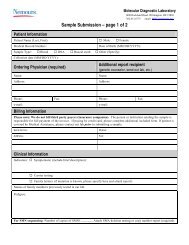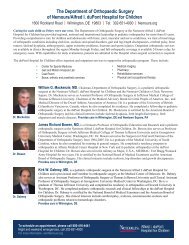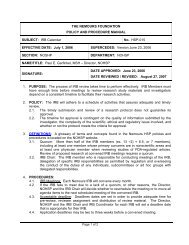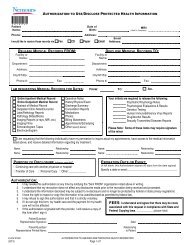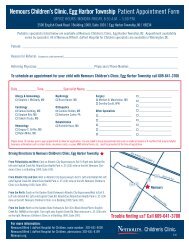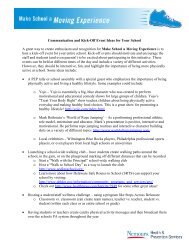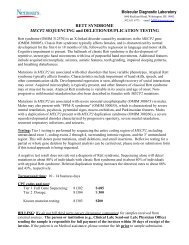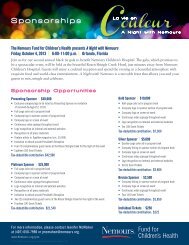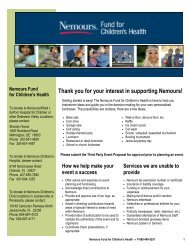Best Practices for Healthy Eating Guide - Nemours
Best Practices for Healthy Eating Guide - Nemours
Best Practices for Healthy Eating Guide - Nemours
You also want an ePaper? Increase the reach of your titles
YUMPU automatically turns print PDFs into web optimized ePapers that Google loves.
Tip Sheet: <strong>Healthy</strong> <strong>Eating</strong> <strong>for</strong> Infants Ages 4 through 7 Months<br />
Breast Milk and Formula<br />
n Feed your baby either breast milk or iron-<strong>for</strong>tified<br />
<strong>for</strong>mula only <strong>for</strong> the first 6 months of life. Even after<br />
starting solid foods, breastfeeding and <strong>for</strong>mula feeding<br />
should continue until 12 months of age. Unless<br />
breastfeeding continues, whole milk should be served<br />
after 12 months of age.<br />
n Starting and continuing to breastfeed can be<br />
challenging. Don’t give up! If you need support or<br />
have questions, call a local lactation consultant or the<br />
Special Supplemental Nutrition Program <strong>for</strong> Women,<br />
Infants and Children (WIC) in your area. For more<br />
in<strong>for</strong>mation on breastfeeding contact:<br />
• WIC toll-free at 1-800-222-2189<br />
• Toll-free National Women’s Health Helpline<br />
at 1-800-994-9662<br />
• Your state breastfeeding coalition. Find it at:<br />
http://www.usbreastfeeding.org/Coalitions/<br />
CoalitionsDirectory/tabid/74/Default.aspx<br />
n Many infants will need to receive a daily Vitamin D<br />
supplement, which is necessary to ensure healthy<br />
bone growth and development. Ask your health care<br />
provider about the amount of Vitamin D needed <strong>for</strong><br />
your infant.<br />
Solid Foods<br />
n Around 6 months your baby will begin to show signs<br />
that he is ready <strong>for</strong> solid foods. Signs include:<br />
• Absence of tongue thrust reflex<br />
• Good neck and head control<br />
• Increased demand <strong>for</strong> breast milk or <strong>for</strong>mula that<br />
continues <strong>for</strong> a few days<br />
n Offer single-ingredient foods first and wait 2 – 3<br />
days between each new food. This makes it easier to<br />
identify the offending food if he experiences a bad<br />
reaction (i.e., allergy).<br />
n Introduce iron-<strong>for</strong>tified rice cereal first, followed by<br />
iron-<strong>for</strong>tified oat or barley cereal.<br />
n Offer different fruits and vegetables. They should be:<br />
• Puréed, mashed or strained to prevent choking<br />
• Served plain without added fat, sugar, honey or salt<br />
n It may take multiple tries (5 – 20) be<strong>for</strong>e your baby<br />
accepts a new food. Don’t get discouraged!<br />
Choking Hazards<br />
Do not feed children younger than four years of age round, firm food<br />
unless it is chopped completely.<br />
The following foods are choking hazards:<br />
n Nuts and seeds<br />
n Large chunks of cheese or meat (e.g., hot dogs)<br />
n Whole grapes, chunks of hard fruit (e.g., apples) and raw<br />
vegetables<br />
n Peanut butter<br />
n Ice cubes<br />
n Raisins<br />
n Popcorn<br />
n Hard, gooey, or sticky candy, chewing gum<br />
*Never leave an infant unattended while she/he is eating.<br />
52 <strong>Best</strong> <strong>Practices</strong> <strong>for</strong> <strong>Healthy</strong> <strong>Eating</strong>



